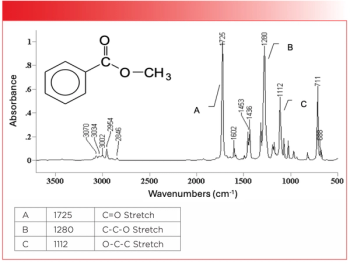
- February 2021
- Volume 36
- Issue 2
Using Nanopore Sensors to Analyze and Characterize Heparin and Other Therapeutic Polysaccharides: An Interview with Jason Dwyer
Jason R. Dwyer of the University of Rhode Island discusses the application of nanopore sensors to the analysis of natural and synthetic oligosaccharides and polysaccharides.
Solid-state silicon nitride (SiNx) nanospore sensors can be used to analyze natural and synthetic oligosaccharides and polysaccharides like the anticoagulant drug heparin. SiNx sensors are providing an understanding of nanopore electrokinetics–mechanisms important for capillary electrophoresis with often outsized importance on the nanoscale. Recent work in nanopores is providing a platform for new assay development applicable to clinical analysis for many therapeutic molecules. Recently, we spoke to Jason R. Dwyer of the University of Rhode Island and a Federation of Analytical Chemistry and Spectroscopy Societies (FACSS) Innovation Award winner from the 2019 SciX conference, regarding his work in this field.
In a recent paper, you discuss the complexities of therapeutic oligo- and polysaccharides (1). Characterizing polysaccharides is a daunting task for conventional chemical analysis, as details such as contamination, monomer composition, stereo-chemistry, polymer length, monomer sequence, polymer branching, and monomer linkage types are required to understand the structure and function of these molecules. Where did you have the initial idea to investigate nanopore sensors for polysaccharide characterization, rather than typical separation methods combined with mass spectrometry? How did you decide to investigate polysaccharides, and specifically heparin?
When I started my independent academic career, the development of nanopore-based sequencing of DNA was in full swing, and was being pushed by an intrepid few toward protein analysis. I remember reading about the heparin crisis and thinking that on some level (a very simplistic level, mind you), that the heparin molecule is just a charged biopolymer like DNA, and that we might be able to apply the single-molecule sensing performance of nanopores to a pressing and important problem. What differentiates nanopores in this application compared to more sophisticated conventional chemical analysis tools is that they hold the promise of low-cost, high-performance sensing in a platform that relies on a very basic principle of operation. While simple in principle, it took a lot of development effort to bring the idea to fruition. Really talented students doing this hard work afforded me the luxury of considering what I wanted to do in the nanopore world. I had always been interested in turning nanopore sensors into sensors that were general and not restricted to only a particular class of analyte. At the same time, I reflected that my training as a chemist had helped me make unique contributions to my past research in ultrafast science–developing femtosecond electron diffraction and exploring the hydration dynamics of DNA by femtosecond infrared spectroscopy. It’s probably fair to say that if you can make a nanopore carbohydrate analyzer, you’re not too far away from a general chemical sensor platform. Given the importance of carbohydrate analysis, and the opportunities I saw from a chemistry and materials science perspective, it seemed like nanopore carbohydrate sensing was a very exciting and promising area on which to focus.
How is your work on nanopore sensing different from what others have done previously?
The work for which we won the FACSS Innovation Award involved discovering and optimizing a way to chemically tune nanopore sensing performance. Early demonstrations in the field required special materials or significant expertise to surface coat nanopores. In our paper, we functionalized more than 100 pores. I think more than had been reported functionalized in a decade of thin-film, solid-state nanopore literature. I can best summarize our approach as “bulletproof.” It opens up the palette of organic chemistry to nanopore science in a very straightforward way.
In the domain of nanopore carbohydrate sensing we were the first to do two things: First, we used thin-film nanopores made with a material that is ubiquitous in consumer electronics. Using a conventional micro- and nanofabrication material means fewer barriers to commercialization of our discoveries. Second, getting reliable tools into the hands of end users is a focus of our work, and therefore, we performed a survey study of a range of carbohydrates exhibiting properties that both revealed key mechanisms to exploit and showed that nanopore sensing could be optimized to cope with the incredible diversity of carbohydrate properties. This carbohydrate sensing work underscored the importance of our work on chemically functionalizing nanopores; the native nanopore composition, alone, would be hard-pressed to cope with the chemical diversity of carbohydrates.
In your nanopore sensing device you use a voltage-driven passage of a sample molecule that can pass into, across, or through an electrolyte-filled nanopore. Would you explain how this device can be used for analyte detection and characterization?
The passage of electrolyte ions through the nanopore gives a steady “open pore” current whose magnitude is determined by the size and surface chemistry of the nanopore, the electrolyte composition, and the applied voltage. When an analyte passes into the nanopore (or near it), it displaces those electrolyte ions, giving rise to a current perturbation whose magnitude is dependent on those same parameters, plus size and charge distribution of the analyte. When the nanopore is small enough to force a biopolymer to pass linearly through a nanopore, each monomer constrained in the nanopore will contribute uniquely to the overall current perturbation. In the nanopore DNA-sensing world especially, considerable effort has gone into pulling out this sequence-specific information from the total signal.
Is the device and technology associated with nanopore sensors mostly applicable to spectroscopic applications, or could it also be used in conjunction with separation methods, such as chromatography or sample partitioning for mass spectrometry? Do you foresee nanopore devices being designed for specific assays and providing specific tests for low cost, yet accurate analysis of therapeutic molecules?
I think that nanopores have a tremendous amount of potential in a stand-alone sense, especially when suitably chemically tuned to optimize sensitivity and selectivity for a particular analyte. They offer single-molecule sensing without the need for chemical labelling or spectroscopic readout since the properties the nanopore is sensitive to—size and charge—are inherently their own labels. Of course, nanopore sensing could be implemented after a chromatographic separation step, thereby increasing the selectivity. Nanopore sensing can also be used in conjunction with fluorescence detection, or with electron tunneling detection, for example. More broadly, nanopores can trap and manipulate single molecules in solution, and this capability can be exploited in a number of ways, and in combination with a number of other analysis tools. Nanopores already have a very strong foothold in DNA sequencing, and I can imagine that they will find application in a wide range of other sensing areas. We are really optimistic about their use for glycomics.
In another paper (2), you discuss nanofabricated thin-film platforms and their analytical applications using techniques such as visible or infrared spectroscopy, electron energy loss spectroscopy, X-ray photoelectron spectroscopy, and single molecule sensing. In this paper, your focus was on the thin film structure being common across platforms, rather than the nanopore being a focal element. What are the required differences in the nanopore sensor device itself when applied to these different analytical methods, and how can the nanopore devices be extended for imaging applications?
To specifically address your question, we craft well-defined, near molecular-sized channels through thin films of silicon nitride to create optimal nanopore sensors. Those channels can be used for nanopore-based sensing, to hold single molecules for study by other techniques, or as well-defined access ports to the contents of a sample cell bounded by the thin film. For conventional nanopore single-molecule sensing, the diameter of the nanopore should in general be not much larger than the dimensions of the conformation of interest of the given analyte. These same films that house the nanopores, when left intact, can serve as ~10–100 nm-thick windows for sample chambers that allow interrogation with a variety of techniques using optical and charged-particle beams. When even this sample wall thickness is too thick, well-defined access ports can be formed through the film-on the same scale or larger than the nanopores used for sensing in order to permit access to the underlying sample.
What are the main sampling limitations, if any, when using these nanopore sensing devices?
Broadly speaking, the nanopore sensor will detect every single molecule that passes through the pore. The trick is to make sure that the molecules of interest make it to the nanopore in a reasonable amount of time, an area benefiting from significant research effort. In nanopore DNA sequencing work, electrophoresis has been the easiest way to control the biopolymer motion. In our work on carbohydrates, the possibility of charge-neutral biopolymers has eliminated electrophoresis as a possibility, and we are relying on electroosmosis.
Nanopore sensing is not limited to solution-phase samples, although that is how the majority of the studies are carried out. In leaving the solution phase behind, the role of the nanopore might well change to be a single-molecule orifice to inject sample into a differ- ent type of detector, for example. But even in the solution domain, it’s really interesting to think about what the insolubility of a sample might mean for a detector that simply relies on passage of a molecule through a channel.
What are your next steps in this work?
We are pushing onward in using chemically tuned nanopores to advance nanopore carbohydrate analysis, carrying out fundamental work and trying to develop applications. Our recent “ABC Highlights” article outlines our perspective on this question of the next steps (3).
References
1. B.I. Karawdeniya, Y.M.N.D.Y. Bandara, J.W. Nichols, R.B. Chevalier, and J.R. Dwyer, Nat. Commun. 9(1), 3278 (2018).
2. J.R. Dwyer, and M. Harb, Appl. Spectrosc. 71(9), 2051–2075 (2017).
3. J.T. Hagan, B.S. Sheetz, Y.M.N.D.Y. Bandara, B.I. Karawdeniya, M.A. Morris, R.B. Chevalier, and J.R. Dwyer, Anal. Bioanal. Chem. 412, 6639–6654 (2020).
Jason Dwyer is a Professor of Chemistry at the University of Rhode Island. His research is at the intersection of bioanalytical chemistry and nanofabrication, with a focus on developing enabling tools for discovery and application.
Articles in this issue
almost 5 years ago
How Pharmaceutical Innovation is Saving the Worldalmost 5 years ago
Quantitative Methods for Multielemental Analysis in Low-Volume Biofluidsalmost 5 years ago
Why Does -1 x -1 = 1?Newsletter
Get essential updates on the latest spectroscopy technologies, regulatory standards, and best practices—subscribe today to Spectroscopy.




